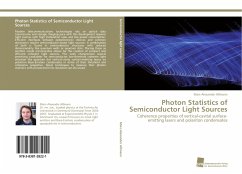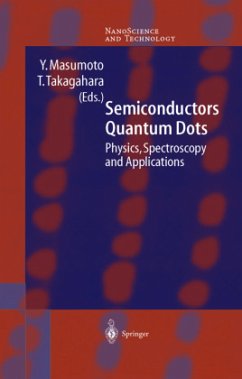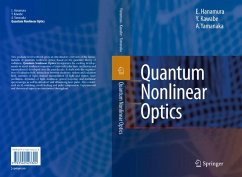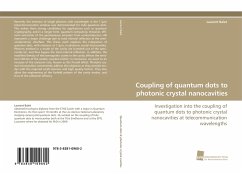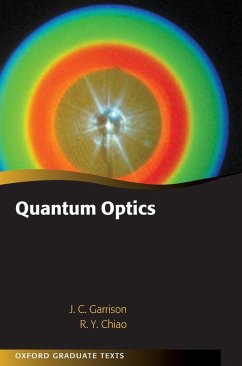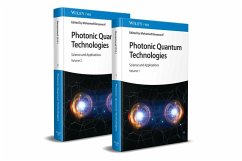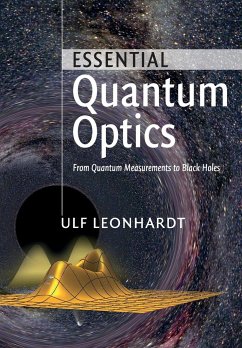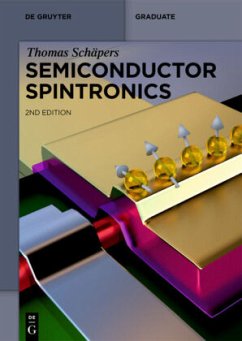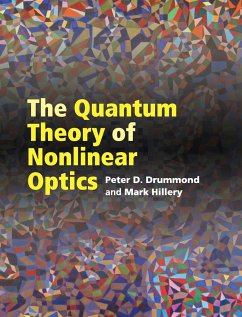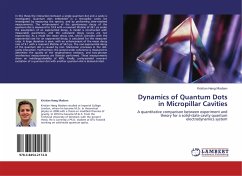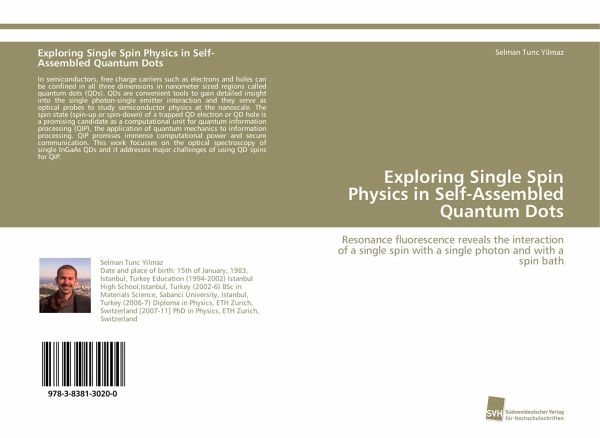
Exploring Single Spin Physics in Self-Assembled Quantum Dots
Resonance fluorescence reveals the interaction of a single spin with a single photon and with a spin bath
Versandkostenfrei!
Versandfertig in 6-10 Tagen
36,99 €
inkl. MwSt.

PAYBACK Punkte
18 °P sammeln!
In semiconductors, free charge carriers such as electrons and holes can be confined in all three dimensions in nanometer sized regions called quantum dots (QDs). QDs are convenient tools to gain detailed insight into the single photon-single emitter interaction and they serve as optical probes to study semiconductor physics at the nanoscale. The spin state (spin-up or spin-down) of a trapped QD electron or QD hole is a promising candidate as a computational unit for quantum information processing (QIP), the application of quantum mechanics to information processing. QIP promises immense comput...
In semiconductors, free charge carriers such as electrons and holes can be confined in all three dimensions in nanometer sized regions called quantum dots (QDs). QDs are convenient tools to gain detailed insight into the single photon-single emitter interaction and they serve as optical probes to study semiconductor physics at the nanoscale. The spin state (spin-up or spin-down) of a trapped QD electron or QD hole is a promising candidate as a computational unit for quantum information processing (QIP), the application of quantum mechanics to information processing. QIP promises immense computational power and secure communication. This work focusses on the optical spectroscopy of single InGaAs QDs and it addresses major challenges of using QD spins for QIP.



